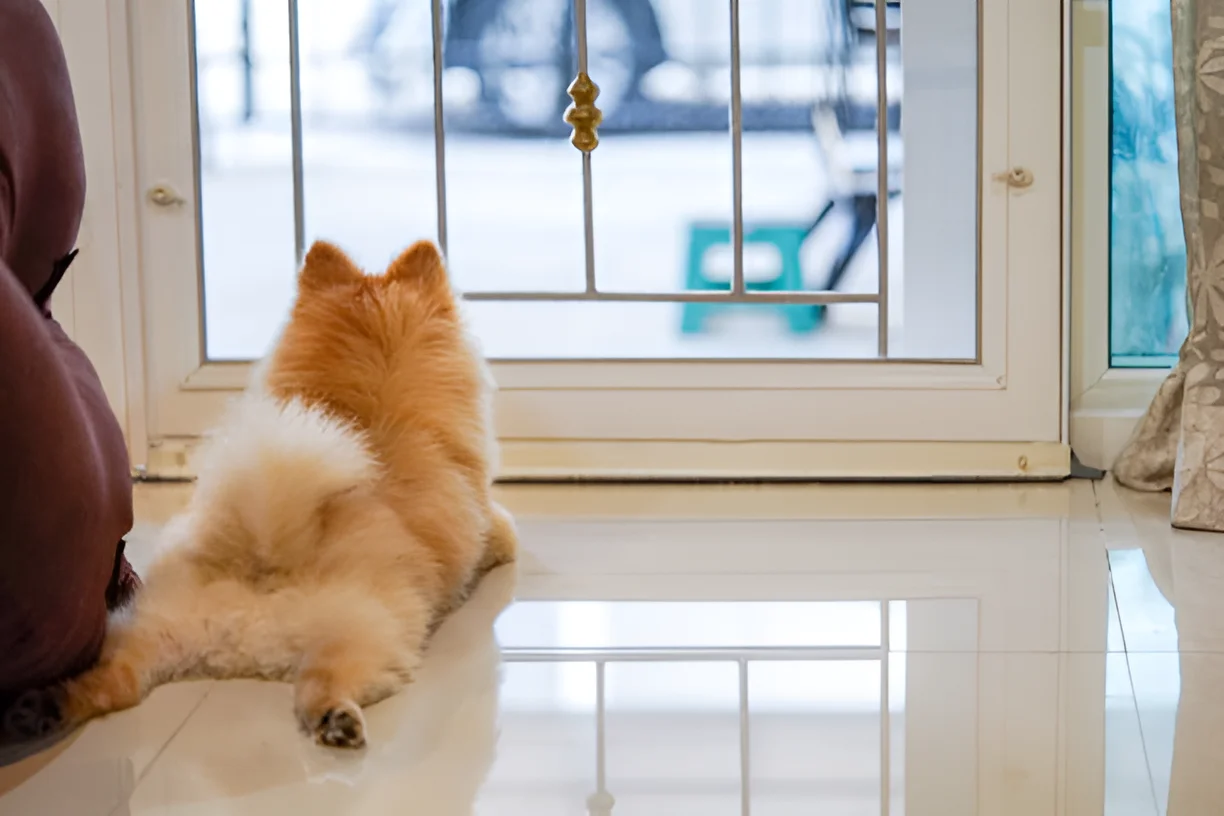To protect your front door from your dog, use protective barriers, train your dog, and provide alternative outlets for their energy. Understanding the reasons behind your dog’s behavior and implementing effective solutions can help maintain both your door and your dog’s well-being.
Dogs are wonderful companions, but they can sometimes cause damage to our homes, especially when they scratch or chew on doors. Protecting your front door from your dog involves a combination of preventive measures, training, and providing alternative activities. This comprehensive guide will explore various strategies to protect your door, understand your dog’s behavior, and ensure a harmonious living environment.
Understanding Why Dogs Scratch Doors
Before diving into solutions, it’s important to understand why dogs scratch doors. Common reasons include:
- Separation Anxiety: Dogs may scratch doors when they feel anxious about being separated from their owners.
- Attention-Seeking: Some dogs scratch doors to get their owner’s attention.
- Boredom: Lack of mental and physical stimulation can lead to destructive behaviors.
- Need to Go Outside: Dogs may scratch doors when they need to go outside to relieve themselves.
Protective Barriers and Solutions
Several physical barriers and protective solutions can help safeguard your front door from dog scratches:
Scratch Screens: Scratch screens are thick sheets of clear plastic that can be attached to your door to absorb the damage from your dog’s nails. These screens are easy to install and replace when they become worn out.
Kick Plates: A kick plate is a thin sheet of metal that can be installed at the bottom of your door to prevent deep scratches. Kick plates are durable and can be attached with screws or heavy-duty adhesive.
Plexiglass Shields: Plexiglass or Lexan sheets can be cut to fit your door and attached with velcro strips or adhesive. These clear shields provide a strong barrier against scratches and are easy to clean.
Door Covers: Fabric door covers, such as old bed sheets or blankets, can be draped over the door to protect it from light scratches. This is a quick and temporary solution that can be easily removed and washed.
Pet Gates: Installing a pet gate in front of your door can prevent your dog from reaching the door to scratch it. Pet gates are especially useful for keeping dogs away from specific areas of the house.
Training Your Dog
Training your dog is essential for preventing destructive behaviors. Here are some effective training techniques:
Basic Commands: Teach your dog basic commands such as “sit,” “stay,” and “leave it” to help manage their behavior. Consistent training and positive reinforcement can reduce the likelihood of door scratching.
Desensitization: Gradually desensitize your dog to your departures by practicing short absences and gradually increasing the duration. This can help reduce separation anxiety and the associated scratching behavior.
Redirection: Redirect your dog’s attention to appropriate activities when they start to scratch the door. Provide toys, puzzle feeders, or chew items to keep them occupied.
Positive Reinforcement: Reward your dog for calm behavior and not scratching the door. Use treats, praise, and affection to reinforce good behavior.
Providing Alternative Outlets
Ensuring your dog has enough mental and physical stimulation can prevent boredom and reduce destructive behaviors:
Exercise: Regular exercise is crucial for your dog’s physical and mental well-being. Take your dog for daily walks, play fetch, or engage in other physical activities to burn off excess energy.
Mental Stimulation: Provide puzzle toys, interactive feeders, and training sessions to keep your dog’s mind engaged. Mental stimulation can reduce boredom and prevent destructive behaviors.
Chew Toys: Offer a variety of chew toys to satisfy your dog’s natural chewing instincts. Rotate the toys regularly to keep your dog interested.
Social Interaction: Ensure your dog gets plenty of social interaction with you, other family members, and other dogs. Socialization can reduce anxiety and improve overall behavior.
Addressing Separation Anxiety
Separation anxiety is a common issue that can lead to destructive behaviors such as door scratching. Here are some strategies to address it:
Gradual Departures: Practice leaving your dog alone for short periods and gradually increase the duration. This helps your dog get used to being alone without becoming anxious.
Comfort Items: Provide comfort items such as a favorite blanket or a piece of your clothing with your scent. These items can help soothe your dog when you’re not home.
Calming Aids: Consider using calming aids such as pheromone diffusers, anxiety wraps, or calming supplements. These products can help reduce anxiety and promote relaxation.
Professional Help: If your dog’s separation anxiety is severe, consider seeking help from a professional dog trainer or behaviorist. They can provide personalized strategies and support.
Conclusion
To protect your front door from your dog, use protective barriers, train your dog, and provide alternative outlets for their energy. Understanding the reasons behind your dog’s behavior and implementing effective solutions can help maintain both your door and your dog’s well-being. By following the guidelines and tips provided in this article, you can create a harmonious living environment and prevent destructive behaviors.
The photo featured below the post headline is Credit: Aonip/istockphoto
I hope you find this post helpful and informative. If Yes’ feel free to share it with your friends!
Frequently Asked Questions
How can I protect my front door from dog scratches?
Use protective barriers such as scratch screens, kick plates, or plexiglass shields. Train your dog and provide alternative outlets for their energy.
Why does my dog scratch the door?
Common reasons include separation anxiety, attention-seeking, boredom, and the need to go outside.
How can I train my dog not to scratch the door?
Teach basic commands, use desensitization techniques, redirect their attention, and use positive reinforcement.
What are some alternative activities for my dog?
Provide regular exercise, mental stimulation, chew toys, and social interaction to keep your dog engaged and prevent boredom.
How can I address my dog’s separation anxiety?
Practice gradual departures, provide comfort items, use calming aids, and seek professional help if needed.

